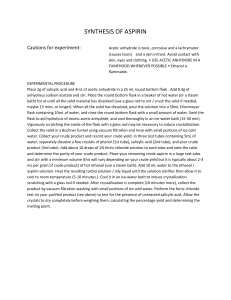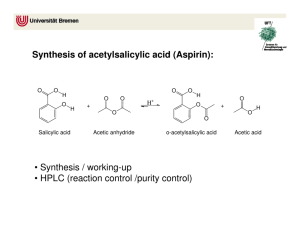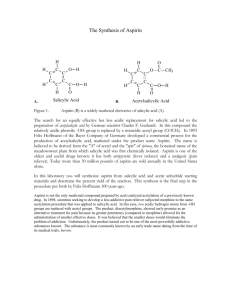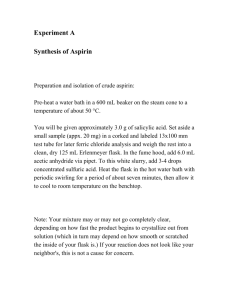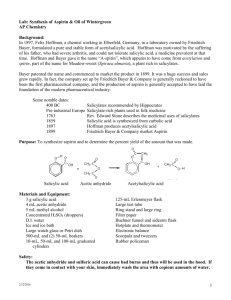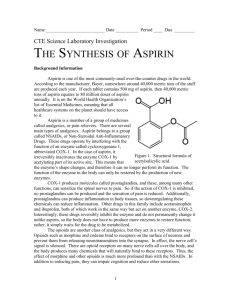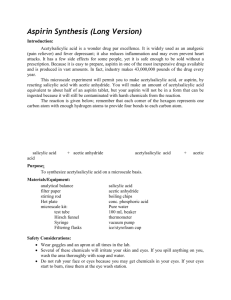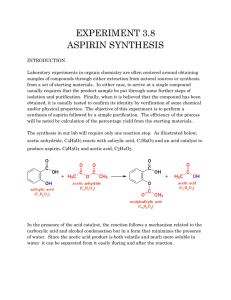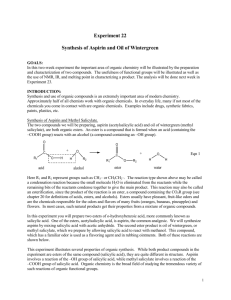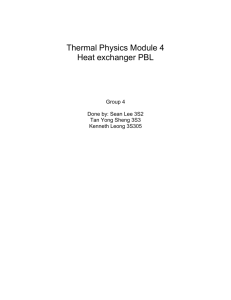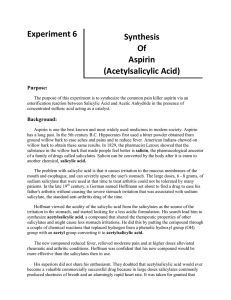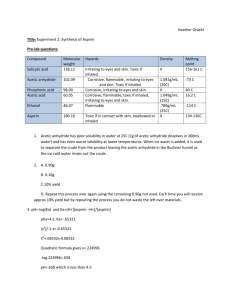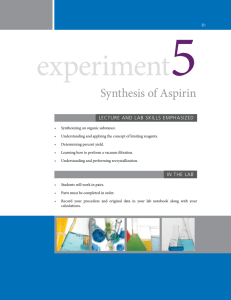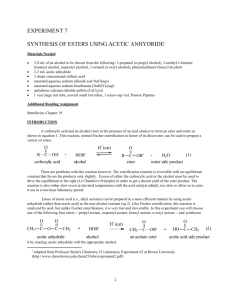Synthesis of Aspirin
advertisement
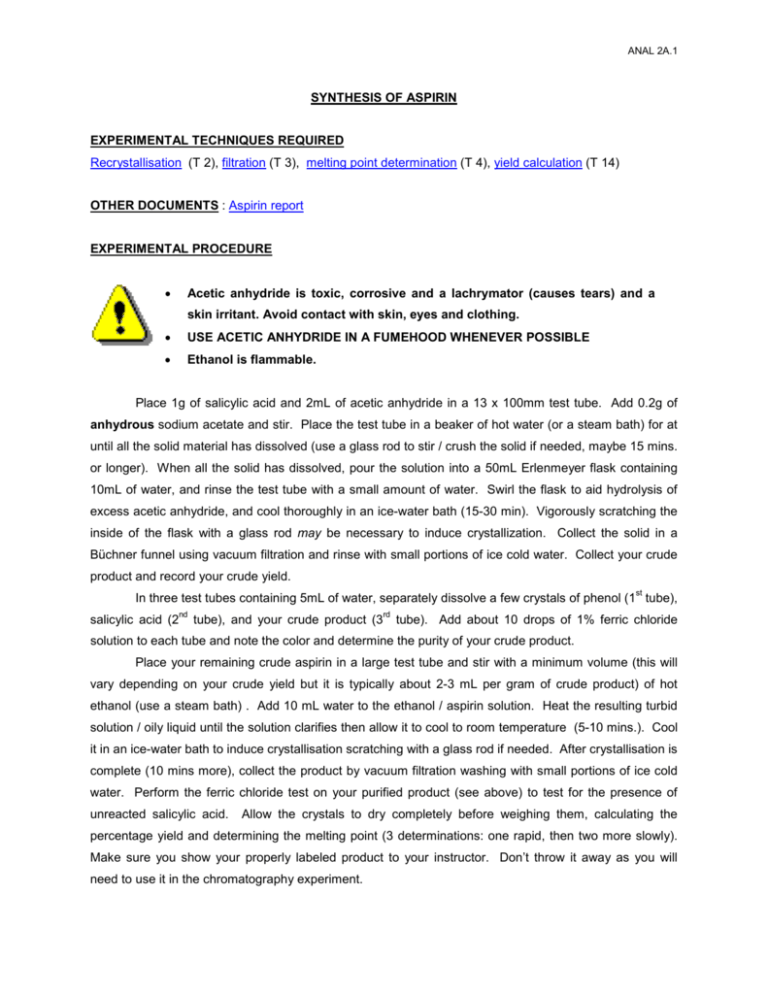
ANAL 2A.1 SYNTHESIS OF ASPIRIN EXPERIMENTAL TECHNIQUES REQUIRED Recrystallisation (T 2), filtration (T 3), melting point determination (T 4), yield calculation (T 14) OTHER DOCUMENTS : Aspirin report EXPERIMENTAL PROCEDURE • Acetic anhydride is toxic, corrosive and a lachrymator (causes tears) and a skin irritant. Avoid contact with skin, eyes and clothing. • USE ACETIC ANHYDRIDE IN A FUMEHOOD WHENEVER POSSIBLE • Ethanol is flammable. Place 1g of salicylic acid and 2mL of acetic anhydride in a 13 x 100mm test tube. Add 0.2g of anhydrous sodium acetate and stir. Place the test tube in a beaker of hot water (or a steam bath) for at until all the solid material has dissolved (use a glass rod to stir / crush the solid if needed, maybe 15 mins. or longer). When all the solid has dissolved, pour the solution into a 50mL Erlenmeyer flask containing 10mL of water, and rinse the test tube with a small amount of water. Swirl the flask to aid hydrolysis of excess acetic anhydride, and cool thoroughly in an ice-water bath (15-30 min). Vigorously scratching the inside of the flask with a glass rod may be necessary to induce crystallization. Collect the solid in a Büchner funnel using vacuum filtration and rinse with small portions of ice cold water. Collect your crude product and record your crude yield. st In three test tubes containing 5mL of water, separately dissolve a few crystals of phenol (1 tube), salicylic acid (2 nd tube), and your crude product (3 rd tube). Add about 10 drops of 1% ferric chloride solution to each tube and note the color and determine the purity of your crude product. Place your remaining crude aspirin in a large test tube and stir with a minimum volume (this will vary depending on your crude yield but it is typically about 2-3 mL per gram of crude product) of hot ethanol (use a steam bath) . Add 10 mL water to the ethanol / aspirin solution. Heat the resulting turbid solution / oily liquid until the solution clarifies then allow it to cool to room temperature (5-10 mins.). Cool it in an ice-water bath to induce crystallisation scratching with a glass rod if needed. After crystallisation is complete (10 mins more), collect the product by vacuum filtration washing with small portions of ice cold water. Perform the ferric chloride test on your purified product (see above) to test for the presence of unreacted salicylic acid. Allow the crystals to dry completely before weighing them, calculating the percentage yield and determining the melting point (3 determinations: one rapid, then two more slowly). Make sure you show your properly labeled product to your instructor. Don’t throw it away as you will need to use it in the chromatography experiment. ANAL 2A.2 Typical Sample Label: MARY DOE OCOCH3 wt: 1.9 g mp: 120-121o C % yield: 50% CO2H ASPIRIN CLEAN UP • The aqueous mother liquor should be transferred to the aqueous waste container. REPORT Before writing any Chem 351 laboratory report, we strongly recommend that you review section 8 in the introductory section of the student laboratory manual that discusses how to write reports and/or from “writing reports” on the course website. Students often don’t get the grades they would like because they make errors that are addressed in that section of the manual. These are avoidable errors. It makes the most sense to write separate reports for aspirin and acetaminophen The report should be completed in the template provided. Remember that more it not necessarily better. It is important to be accurate and concise rather than verbose and vague. Proper English should be used and it should be written in your own words.
